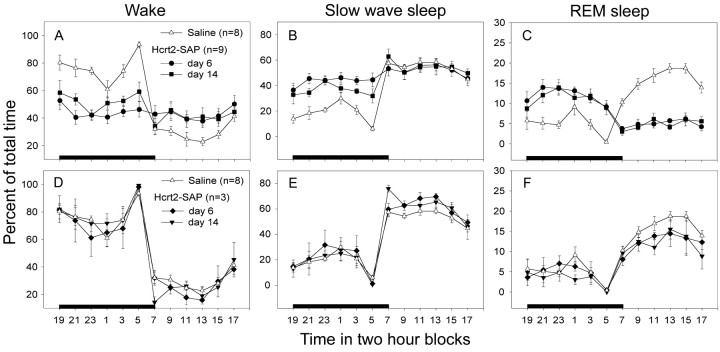Fig. 9.
Mean (±SEM) percentage of wakefulness, SWS, and REM sleep during 24 hr in rats administered Hcrt2-SAP or saline in the posterior hypothalamus. The 24 hr are represented in 2 hr blocks. Thedark bar represents the 12 hr light-off period. Animals with a >60% decline in the number of Hcrt cells (A–C) experienced significantly more SWS and REM sleep at night compared with saline-treated rats. During the day the lesioned rats had as much SWS as controls but REM sleep was decreased. The night-time increase in sleep served to lessen the diurnal variation in sleep. In animals that had partial loss of Hcrt neurons (D–F), there was no change in sleep.

